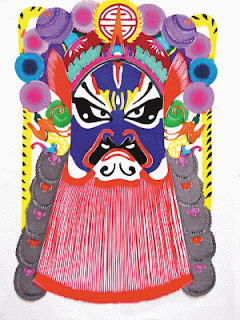Chinese masks date back to more than 4000 years ago. As for masks, China is one of the countries of the longest history, of the widest spread and the most types over the world.
Mask culture is a kind of international culture in the world. In China, mask culture not only has a long history, of rich concepts and varies from regions and nationalities. Chinese masks are given the reflections of belief, customs, wishes and aesthetic ideas.Mask art is the ancient culture, resulting from development of human mind and religious sentiment, showing the unique mystique of original arts, rich imagination and exquisite skills. During the long development period, Chinese mask art mixes, depends on affects with primitive dance, witchcraft, totem worship, folk songs and dances and traditional Chinese opera.
Typical Chinese Masks:
Peking Opera Masks, Traditional Chinese Opera Masks, Tibetan Masks and Nuo-masks.
Peking Opera Masks:
It is related to the special makeup method, painted with different color on face based on personalities, disposition and characters in Peking Opera, developing since around 150 years ago.
Traditional Chinese Opera Masks: Makes use in traditional Chinese Opera.
Tibetan Masks:
Tibetan masks are involved with Ancestor worship and totem worship in religious beliefs in Tibet, mainly referring to masks for Tiaoshen (a kind of dance used to express stories of Gods and ghosts), hanging masks (of Gods and ghosts) in temples or beams, Tibetan Opera Masks.
Nuo-masks:
As the characterization of Nuo opera, Nuo mask also reflects the original worship consciousness, religious consciousness and folklore in Guizhou vividly and intensively.






































